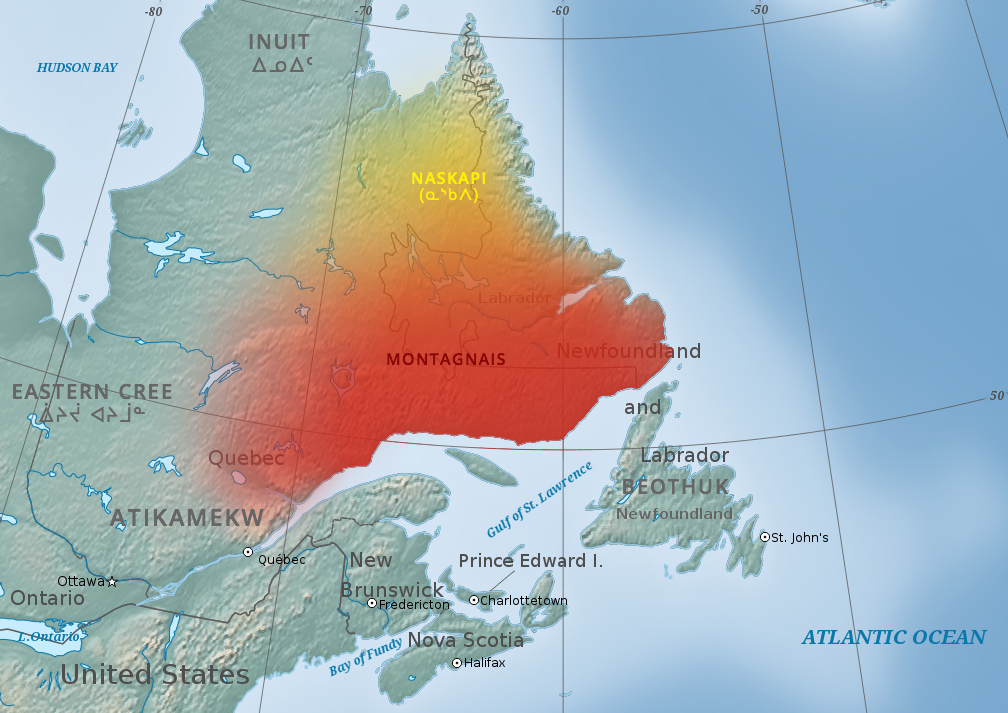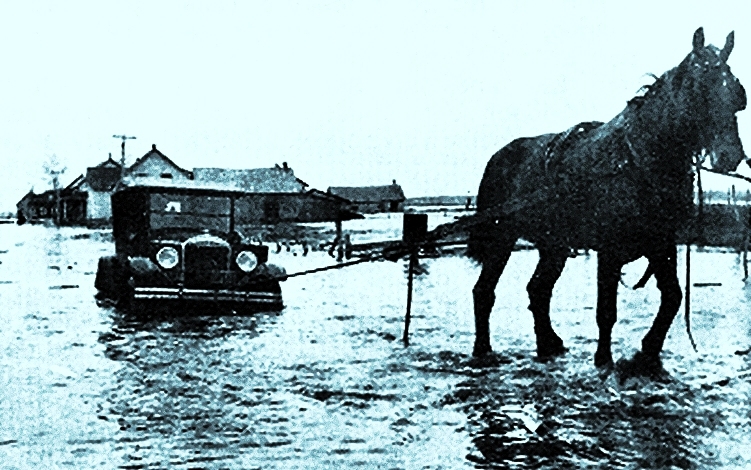|
Pekuakamiulnuatsh First Nation
Pekuakamiulnuatsh First Nation or Première Nation des Pekuakamiulnuatsh in French, is a First Nation of Canada. The Nation is based on its reserve of Mashteuiatsh, in the Saguenay–Lac-Saint-Jean region of Quebec. The community is north of Roberval, on the western shore of Lac Saint-Jean Lac Saint-Jean (Canadian French: ) is a large, relatively shallow lake in south-central Quebec, Canada, in the Laurentian Highlands. It is situated north of the Saint Lawrence River, into which it drains via the Saguenay River. It covers an are .... References * External links * * * * Location and map: {{authority control First Nations in Quebec Communities in Saguenay–Lac-Saint-Jean Innu ... [...More Info...] [...Related Items...] OR: [Wikipedia] [Google] [Baidu] |
Innu
The Innu / Ilnu ("man", "person") or Innut / Innuat / Ilnuatsh ("people"), formerly called Montagnais from the French colonial period ( French for "mountain people", English pronunciation: ), are the Indigenous inhabitants of territory in the northeastern portion of the present-day province of Labrador and some portions of Quebec. They refer to their traditional homeland as ''Nitassinan'' ("Our Land", ᓂᑕᔅᓯᓇᓐ) or ''Innu-assi'' ("Innu Land"). The Innu are divided into several bands, with the Montagnais being the southernmost group and the Naskapi being the northernmost. Their ancestors were known to have lived on these lands as hunter-gatherers for several thousand years. To support their seasonal hunting migrations, they created portable tents made of animal skins. Their subsistence activities were historically centred on hunting and trapping caribou, moose, deer, and small game. Their language, Ilnu-Aimun or Innu-Aimun (popularly known since the French colonia ... [...More Info...] [...Related Items...] OR: [Wikipedia] [Google] [Baidu] |
Mashteuiatsh
Mashteuiatsh is a First Nations reserve in the Saguenay–Lac-Saint-Jean region of Quebec, Canada, about north from the centre of Roberval. It is the home to the Pekuakamiulnuatsh First Nation. It is located on a headland jutting out on the western shores of Lake Saint-Jean known as Pointe-Bleue, in the geographic township of Ouiatchouan, and belongs to the Montagnais du Lac St-Jean Innu band. It is geographically within the Le Domaine-du-Roy Regional County Municipality but administratively not part of it. Previously officially known as Ouiatchouan Reserve, it was renamed Mashteuiatsh in 1985, from ''Ka Mesta8iats'', meaning "where there is a point" or "seeing one yet again at the point". Mashteuiatsh is serviced by a health centre, community radio station, arena, library, community and sports centre, social services centre, municipal water and sewer system, fire station, and an aboriginal police force. The reserve is home to the Mashteuiatsh Amerindian Museum (''Musée amé ... [...More Info...] [...Related Items...] OR: [Wikipedia] [Google] [Baidu] |
Quebec
Quebec ( ; )According to the Canadian government, ''Québec'' (with the acute accent) is the official name in Canadian French and ''Quebec'' (without the accent) is the province's official name in Canadian English is one of the thirteen provinces and territories of Canada. It is the largest province by area and the second-largest by population. Much of the population lives in urban areas along the St. Lawrence River, between the most populous city, Montreal, and the provincial capital, Quebec City. Quebec is the home of the Québécois nation. Located in Central Canada, the province shares land borders with Ontario to the west, Newfoundland and Labrador to the northeast, New Brunswick to the southeast, and a coastal border with Nunavut; in the south it borders Maine, New Hampshire, Vermont, and New York in the United States. Between 1534 and 1763, Quebec was called ''Canada'' and was the most developed colony in New France. Following the Seven Years' War, Quebec b ... [...More Info...] [...Related Items...] OR: [Wikipedia] [Google] [Baidu] |
Indigenous And Northern Affairs Canada
*
*
{{disambiguation ...
Indigenous may refer to: *Indigenous peoples *Indigenous (ecology), presence in a region as the result of only natural processes, with no human intervention *Indigenous (band), an American blues-rock band *Indigenous (horse), a Hong Kong racehorse * ''Indigenous'' (film), Australian, 2016 See also *Disappeared indigenous women *Indigenous Australians *Indigenous language *Indigenous religion *Indigenous peoples in Canada *Native (other) Native may refer to: People * Jus soli, citizenship by right of birth * Indigenous peoples, peoples with a set of specific rights based on their historical ties to a particular territory ** Native Americans (other) In arts and enterta ... [...More Info...] [...Related Items...] OR: [Wikipedia] [Google] [Baidu] |
First Nations In Canada
First Nations (french: Premières Nations) is a term used to identify those Indigenous Canadian peoples who are neither Inuit nor Métis. Traditionally, First Nations in Canada were peoples who lived south of the tree line, and mainly south of the Arctic Circle. There are 634 recognized First Nations governments or bands across Canada. Roughly half are located in the provinces of Ontario and British Columbia. Under Charter jurisprudence, First Nations are a "designated group," along with women, visible minorities, and people with physical or mental disabilities. First Nations are not defined as a visible minority by the criteria of Statistics Canada. North American indigenous peoples have cultures spanning thousands of years. Some of their oral traditions accurately describe historical events, such as the Cascadia earthquake of 1700 and the 18th-century Tseax Cone eruption. Written records began with the arrival of European explorers and colonists during the Age of Dis ... [...More Info...] [...Related Items...] OR: [Wikipedia] [Google] [Baidu] |
Canada
Canada is a country in North America. Its ten provinces and three territories extend from the Atlantic Ocean to the Pacific Ocean and northward into the Arctic Ocean, covering over , making it the world's second-largest country by total area. Its southern and western border with the United States, stretching , is the world's longest binational land border. Canada's capital is Ottawa, and its three largest metropolitan areas are Toronto, Montreal, and Vancouver. Indigenous peoples have continuously inhabited what is now Canada for thousands of years. Beginning in the 16th century, British and French expeditions explored and later settled along the Atlantic coast. As a consequence of various armed conflicts, France ceded nearly all of its colonies in North America in 1763. In 1867, with the union of three British North American colonies through Confederation, Canada was formed as a federal dominion of four provinces. This began an accretion of provinces an ... [...More Info...] [...Related Items...] OR: [Wikipedia] [Google] [Baidu] |
Indian Reserve
In Canada, an Indian reserve (french: réserve indienne) is specified by the '' Indian Act'' as a "tract of land, the legal title to which is vested in Her Majesty, that has been set apart by Her Majesty for the use and benefit of a band." Indian reserves are the areas set aside for First Nations, an indigenous Canadian group, after a contract with the Canadian state ("the Crown"), and are not to be confused with land claims areas, which involve all of that First Nations' traditional lands: a much larger territory than any reserve. Demographics A single "band" (First Nations government) may control one reserve or several, while other reserves are shared between multiple bands. In 2003, the Department of Indian and Northern Affairs stated there were 2,300 reserves in Canada, comprising . According to Statistics Canada in 2011, there are more than 600 First Nations/Indian bands in Canada and 3,100 Indian reserves across Canada. Examples include the Driftpile First Nation, wh ... [...More Info...] [...Related Items...] OR: [Wikipedia] [Google] [Baidu] |
Saguenay–Lac-Saint-Jean
Saguenay–Lac-Saint-Jean (, ) is a region in Quebec, Canada. It contains the Saguenay Fjord, the estuary of the Saguenay River, stretching through much of the region. It is also known as Sagamie in French, from the first part of "Saguenay" and the last part of "Piekouagami", the Innu name (meaning "flat lake") for Lac Saint-Jean, with the final "e" added to follow the model of other existing region names such as Mauricie, Témiscamie, Jamésie, and Matawinie. With a land area of 98,712.71 km2 (38,113.9 sq mi), the Saguenay–Lac-Saint-Jean is, after the Nord-du-Québec and Côte-Nord regions, the third-largest of Quebec regions in the area. This region is bathed by two major watercourses, Lac Saint-Jean and the Saguenay River, both of which mark its landscape deeply and have been the main drives of its development in history. It is also irrigated by several other large watercourses. Bordered by forests and mountainous massifs, the southern portion of the region constitutes ... [...More Info...] [...Related Items...] OR: [Wikipedia] [Google] [Baidu] |
Roberval, Quebec
Roberval is a city on the south-western shore of Lac Saint-Jean in the Le Domaine-du-Roy Regional County Municipality of Quebec, Canada. With a population of 9,840 in the Canada 2021 Census, it is the fourth largest city on this lake after Alma, Dolbeau-Mistassini and Saint-Félicien. It is the seat of the Domaine-du-Roy RCM and the main service centre for the region with a hospital and some government services. It is also the seat of the judicial district of Roberval. It is the only Lac Saint-Jean town whose core is directly on the lakeshore. Benoît Bouchard, former cabinet Minister and Canadian Ambassador in France, and Michel Gauthier, former federal Leader of the Opposition, represented the area in the federal parliament. Bernard Lord the former Premier of New Brunswick was born here. Roberval was the 2008 winner of ''Kraft Hockeyville''. In their newly renovated arena, Roberval hosted an NHL preseason game between the Montreal Canadiens and the Buffalo Sabres on Septembe ... [...More Info...] [...Related Items...] OR: [Wikipedia] [Google] [Baidu] |
Lac Saint-Jean
Lac Saint-Jean (Canadian French: ) is a large, relatively shallow lake in south-central Quebec, Canada, in the Laurentian Highlands. It is situated north of the Saint Lawrence River, into which it drains via the Saguenay River. It covers an area of , and is at its deepest point. Its name in the Innu language is Piekuakami. Description The lake is fed by dozens of small rivers, including the Ashuapmushuan, the Mistassini, the Peribonka, the Des Aulnaies, the Métabetchouane, and the Ouiatchouane. The towns on its shores include Alma, Dolbeau-Mistassini, Roberval, Normandin, and Saint-Félicien. Three Regional County Municipalities lie on its shores: Lac-Saint-Jean-Est, Le Domaine-du-Roy, and Maria-Chapdelaine. History The lake was named Piekuakami by the Innu, the Indigenous people who occupied the area at the time of European arrival. It was given its French name after Jean de Quen, a Jesuit missionary who in 1647 was the first European to reach its shores. In ... [...More Info...] [...Related Items...] OR: [Wikipedia] [Google] [Baidu] |
First Nations In Quebec
Indigenous peoples in Quebec (french: Peuples autochtones du Québec) total 11 distinct ethnic groups. The 10 First Nations and the Inuit communities number 141,915 people and account for approximately 2 percent of the population of Quebec, Canada. First Nations Algonquian Abenaki The Abenaki comprise two First Nations communities named the Odanak First Nation (in Odanak, near Trois-Rivières) and the Wolinak First Nation (in Wôlinak, near Trois-Rivières). They number approximately 1,900 people. Anishinaabeg The Algonquin, who refer to themselves as ''Anishinaabeg'', comprise nine First Nations who live in communities located in the Outaouais and Abitibi-Témiscamingue regions of Quebec. These First Nations communities are: *Abitibiwinni First Nation in Pikogan *Algonquins of Barriere Lake in Lac-Rapide *Eagle Village First Nation - Kipawa in Kebaowek *Kitcisakik First Nation in Kitcisakik *Kitigan Zibi Anishinabeg First Nation in Kitigan Zibi *Long Point First Natio ... [...More Info...] [...Related Items...] OR: [Wikipedia] [Google] [Baidu] |




